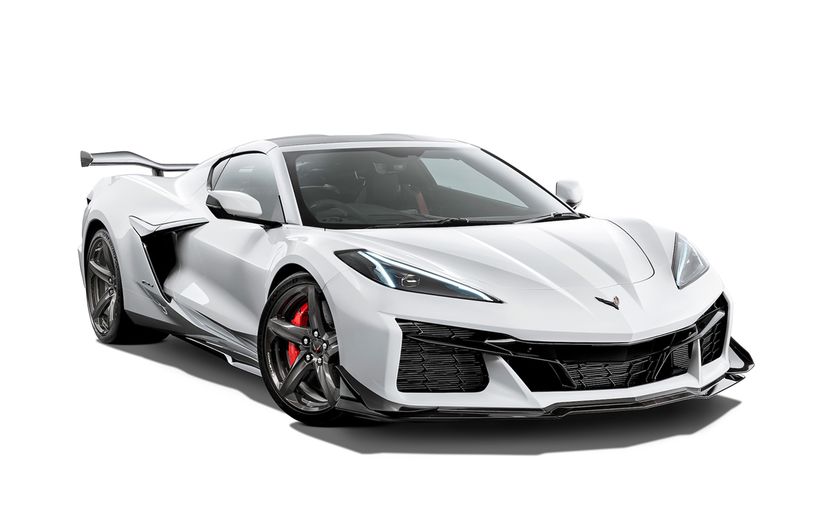Chevrolet Corvette: Sports car for America and finally the world

It is perhaps surprising that it took so long – until the debut of the 2020 Chevrolet Corvette on 19 July 2019 – for Detroit to create a volume-produced sports car to equal or surpass a Ferrari or Porsche on virtually every criterion. But this was not due to any conservatism on the part of Corvette product planners; as early as 1965 when the C3 Corvette was on the drawing board, the aspiration was to mount the engine behind the driver.
The enormous wave of prosperity surfed by the US in the postwar decades could not last forever. The exuberance which brought the 1959 Cadillac’s soaring tailfins and the fabulous 1963 Corvette Sting Ray would give way to stringent new safety legislation and emissions standards, slashed budgets and corporate nervousness.
But in the 1950s and early 1960s, it seemed that anything was possible: America was home to the high-compression V8 engine and high-performance machinery of many varieties: tailfins, vibrant two-toning (even three-toning), ever increasing power outputs and four-on-the-floor gearboxes set the tone.
In the immediate aftermath of World War 2, cashed-up returning servicemen bought MGs and even Jaguar XK120s, which contrasted impressively with the clumsy lumbering homegrown machines.

(Image: wheelsage.org)
GM design supremo Harley Earl – himself quite the Europhile – noticed this fashion and created his Corvette concept car for the corporation’s Motorama, held in New York in January 1953. Unlike most of the dream machines, it went into production just six months later. The product planners even chose to build the Corvette on the same wheelbase as the XK120 and – more radically – to give it a fibreglass body.
But the Chevrolet division was still a couple of years short of getting its modern high-compression V8 engines (although Cadillac was there for the 1949 season), which meant the original Corvette was stuck with a mildly tweaked six-cylinder engine, and, even worse, a two-speed Powerglide automatic transmission. Yes, it was abundantly more rapid than any MG of the day but nowhere near a Jaguar: zero to 60 miles per hour (97km/h) took 11.5 seconds and maximum speed was more than 100. Three hundred cars were produced for model year 1953, all in Polo White with red upholstery and removable black roof. The base price was $3490 (when the entry level two-door Chevrolet 150 Special cost $1613 and the priciest Cadillac $5621).

(Image: wheelsage.org)
Largely I suspect because of its slow sales, this original Corvette has been generally panned by the cognoscenti. One feature in its favour was the location of the engine as far back as practicable, endowing the sports car with a near perfect weight distribution.
(It seems that the domestic US market was nowhere near ready for the Corvette and the ‘Personal Car’ Thunderbird of 1955 proved far more to the American taste of the mid-50s: in 1955 Ford sold 16,155 to 674 Corvettes!)

(Image: wheelsage.org)
In the subsequent decades, Corvette has gone on to become probably the longest-lived automotive sub-brand in history (easily outlasting the Thunderbird which was retired in 2005). During this time there have been eight generations and several standout developments. But arguably the mid-engined C8, selling at generally half the price of a comparable Ferrari is the most impressive moment in 70-plus years of Corvette history. The fact that this is the first Vette to be offered with right-hand-drive illustrates that Chevrolet has, as it were, finally taken the Corvette to the world. More on this soon.

(Image: wheelsage.org)
It was a long drive to get to the C8 with various Hero Moments along the road. By 1955 engineer Zora Arkus-Duntov – soon to be dubbed ‘Father of the Corvette’ – had got involved and was soon appointed the first Corvette chief engineer. He fitted Chevrolet’s new 265 cubic-inch 195-horsepower V8 and offered a three-speed manual gearbox. This was a crucial development in Corvette history and the first Hero Moment. Within a year of Arkus-Duntov’s appointment, Chevy’s sports car was competing in races, often beating Jaguars. Sales leapt from 674 in 1955 to 3467 the following year.

(Image: wheelsage.org)
In 1960 a team of Corvettes competed at the 24 Hours of Le Mans (Hero Moment 2) with the John Fitch/Bob Grossman car winning its class and finishing eighth outright. By 1962, the final year of C1, road versions offered up to 360 brake horsepower.

(Image: wheelsage.org)
The first generation (C1) endured almost a decade. Then for the 1963 model year, the world was astounded by the new Corvette Sting Ray (two words for this debut model), which with its gorgeous lines (the highlight of which was the famous split rear window, which designer Bill Mitchell regarded as his indispensable signature on the car), with 327 cubic-inch V8 and independent rear suspension: Hero Moment 3. The C2 introduced what would become a trademark Corvette styling cue, retractable headlights.
It may seem astonishing to us now, but the Sting Ray had drum brakes all round. So, while Bill Mitchell – even more the Europhile than his predecessor, Harley Earl! – and some of the Chevrolet engineers were inspired by the Jaguar E-Type of 1961, their interest failed to extend to disc brakes at every corner; Americans would mostly have to wait until very late in the 1960s for this far-from-new technology. (Regrettably, the split rear window was a one-year-only wonder, killed off by Arkus-Duntov for its compromised vision.)
Blessedly, the 1965 Corvette offered discs all round (Hero Moment 4). Optional for 1965 was a 425-horsepower 396 cubic-inch big block (Hero Moment 5).

The C3 (1968 to 1982), whose styling was drawn from Bill Mitchell’s Mako Shark concept car (and pioneered removable targa panels in the roof), might have been the first Corvette to place the engine behind the driver, were it not for cost constraints. This was to prove an ongoing process. As early as 1970 mid-engined prototypes were created and the Corvette Indy concept car of the mid-’80s used a twin-turbocharged V8 mounted amidships with drive to all four wheels.

(Image: wheelsage.org)
The dream smouldered. The 1984 C4 – the first Corvette to use unitary rather than body on frame construction – offered vastly improved dynamics but seemed destined to be the end of the line. James Schetter in his book, All Corvettes Are Red, writes: ‘If the Corvette team couldn’t deliver a new car for 1997, it was almost certain that General Motors and Chevrolet would have no Corvettes at all.’

(Image: wheelsage.org)
The C4 would require a radical update to meet impending safety legislation. Against the corporate odds, an all-new C5 – Hero Moment 5 – arrived for season 1997. The engine was still up front but the engineers had created a rear transaxle which dramatically improved weight distribution and dynamics. It debuted General Motors’ all-new 5.7-litre LS1 engine which combined superb performance with much reduced fuel consumption.

(Image: wheelsage.org)
The C6 (2005-2013) was the first Corvette since 1962 with exposed headlights. Despite having a longer wheelbase, the C6 was lighter and tighter than its predecessor. The premium Z06 variant used an aluminium frame and was in such demand that a black market ensued. Then came the carbon-fibre-favouring (roof, bonnet, guards, rocker mouldings and front splitter) ZR1 for Hero Moment 6. Its supercharged 6.2-litre V8 produced 638 brake horsepower and Chevrolet claimed a top speed of 205 miles per hour (330km/h) after being autobahn-tested at 192 (309). Carbon-ceramic brakes and magnetic ride control were further highlights.

(Image: wheelsage.org)
The Global Financial Crisis of 2008 delayed the C7 from being shown in the fall of 2010 as a 2011 model until January 2013. Only budgets precluded a mid-mounted engine. But a new 6.2-litre V8 running through either a seven-speed manual or six-speed automatic enabled it to run zero to 100km/h in 3.9 seconds. It also brought back the Stingray name for the first time since 1983.
Finally, we get to the glorious 2020 C8. Not only is this Hero Moment 7, but it should be seen as the fulfilment of a Corvette dream stretching back to the days of Zora Arkus-Duntov and Bill Mitchell. Both these visionaries lived America but dreamed Europe.

(Image: Car and Driver)
The C8’s 6.2-litre engine is mounted like a jewel in its box beneath the large rear window. There is an eight-speed dual-clutch automated manual gearbox – no other transmission option is available. A front-end lift system can raise the nose 40mm and can be programmed to do so automatically in as many as 1000 locations!
The structure comprises six pieces of die-cast aluminium and its carbon-fibre curved rear bumper is a world first.
Car and Driver tested a 495-horsepower 2023 Z51 at 11.2 seconds through the standing 400 metres. The 70th Anniversary special edition even comes with a set of matching luggage.
In summary, the Corvette has a long and distinguished history. From humble beginnings, it always displayed great potential. It would take a 100,000-word book to detail the whole course of its development, but for me, the Hero Moments give the broad-brush picture. As for the C8, it stands in relation to the supreme supercars of Europe as did the Jaguar E-Type back in 1961, half the price (or even less) than its direct rivals. Detroit has finally produced a sports car the equal of any from Maranello, Modena or maybe even Zuffenhausen!








